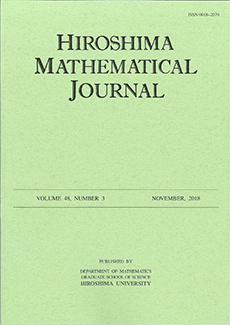Abstract
In this paper a billiard problem in nonlinear and nonequilibrium systems is investigated. This is an interesting problem where a traveling pulse solution behaves as if it is a billiard ball at a glance in some kind of reaction-diffusion system in a rectangular domain. We would like to elucidate the characteristic properties of the solution of this system. For the purpose, as the first step, we try to make a reduced model of discrete dynamical system having the important properties which the original system must have. In this paper we present a discrete toy model, which is reduced intuitively as one of the candidates by use of numerical experiments and careful observation of the solutions. Moreover, we discuss about the similar and important points between the solution in the original ordinary differential equation (which describes the pulse behavior) and the one in the toy model by computing numerically the characteristic quantities in view of the dynamical system, for example, global and local Lyapunov exponents and Lyapunov dimensions. As a result, we elucidate that the system possesses an intermittent-type chaotic attractor.
Citation
Masayasu Mimura. Tomoyuki Miyaji. Isamu Ohnishi. "A billiard problem in nonlinear and nonequilibrium systems." Hiroshima Math. J. 37 (3) 343 - 384, November 2007. https://doi.org/10.32917/hmj/1200529808
Information




